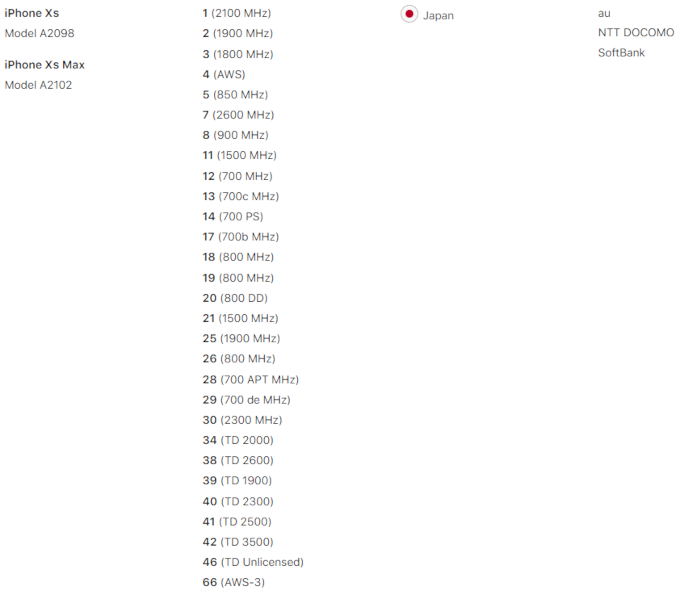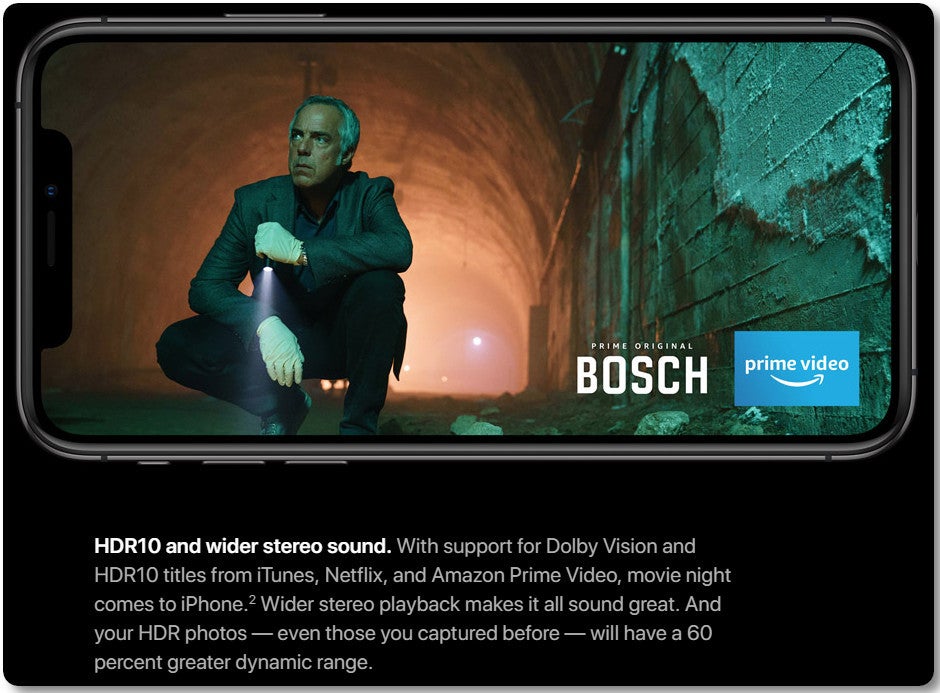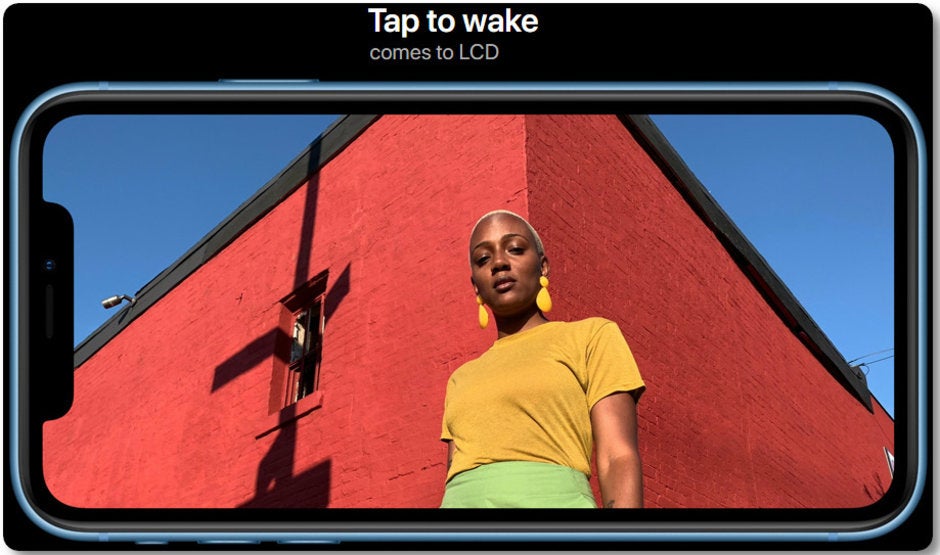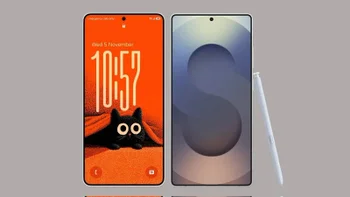All the cool new iPhone XS, Max and XR features you might've missed

Tucked among all the major new features for the iPhone XS, XS Max and XR that Apple announced during its keynote presentation in the Steve Jobs Centre, are a few developments you might've missed.
Those weren't touted on stage or in Apple's promotional materials on the phones' dedicated website, but a brief look at the specs and deeper dive in the terminology reveals that there is more to the iPhone XS, XS Max and XR than meets the eye.
A record number of LTE bands are supported by the new Gigabit LTE modems
Apple's Phil Schiller said on the stage the other day that the new iPhone XS and XS Max support more LTE bands than any other phone at the moment, making them the globetrotter's dream. Apple usually beats that record with each subsequent edition, and we didn't pay much attention to the claim, as it is par for the course now.
We just looked at the model and country pages of Apple for the list of LTE bands, and, lo and behold, the model for Japan supports no less than 29 LTE bands, an absolute record. The other make do with 27 bands, but that is still one more than last year's record holders, the 2017 iPhones. This way, you can use your US-bought iPhone XS and XS Max all over Europe and Asia with fast download speeds.
Of course, Apple is cautioning that it depends on individual carrier settings, saying that "unlocked models may support LTE networks outside the country of purchase when using a valid SIM from a supported carrier. Contact your carrier for more details,. If history is any indication, though, most of the times you can just pop a local LTE SIM card if you've bought your device without a contract, or have unlocked it, and enjoy the blazing download speeds that the local carrier in question offers you.

The new iPhones support a record number of 27-29 LTE bands
Highest 12-bit Dolby Vision HDR support on the largest mobile OLED display
These were also present on the iPhone X, and are supported by the XS, too, but Dolby Vision HDR with its record 12-bit color support has never been on a mobile screen as large as the 6.5" one of the iPhone XS Max. Coupled with the enhanced stereo audio output, watching Dolby Vision content from Netflix, Amazon Prime or iTunes, should be a sight to behold.

Highest water-resistance rating of all major flagships for the iPhone XS and Max
Apple dedicated a whole section of its iPhone XS and XS Max presentation to their water-resistance rating, which is now bumped from IP67 to IP68. The IP68 basically means that you can dunk the gadget in more than three feet of water for up to 30 minutes, and nothing is guaranteed to happen. The kicker, however, is that IP68 also means that the manufacturer itself is setting the upper depth limit for its device, based on lab tests.
Apple set it at 2 metres for the XS and XS Max, or about seven feet, while phones like the Note 9, LG G7 or Xperia XZ3, are also IP68-rated, but their depth limit is set at five feet (1.5 meters). Perhaps this is why Phil Schiller was so confident when he said they've tested the things in the sea, and even in beer glasses, and they escaped unscathed. Just a reminder, the IP ratings are typically only valid for fresh water, not craft brew.

Tap to Wake goes LCD on the iPhone XR
Tap to Wake has long been a staple on many Android phones. It has proven to be so useful and natural to use, that folks moving to phones that don't support it feel a bit out of whack until they rewire their muscle memory to press the power/lock button each time.
Apple's iPhones, however, never supported the Tap to Wake feature up until it introduced it with the iPhone X which was the first Apple handset without the signature home key at the front. You can wake up the display of the iPhone X by tapping it once anywhere on a locked screen. Needless to say, its successor, the iPhone XS, as well as the larger XS Max, also support Tap to Wake, but Apple kept a small surprise in store.
The most affordable, XR model of the iPhones that Apple announced today, also has Tap to Wake functionality, it turns out. In fact, Apple explicitly boasts with the fact that "tap to wake comes to LCD," hinting that it will be a staple now on all of its handsets, regardless of whether they ship with OLED or LCD displays. Sweet!

Finally, stereo audio recording even with the iPhone XR
Not all phones are created equal when it comes to video sound or general audio recording with them. Nokia started a very welcome trend with the Rich Recording functionality built into the first 808 PureView. It used tailor-made mics to achieve wide-range stereo audio recording. A bunch of other manufacturers started paying more attention to the audio recording abilities of their handsets, and it all culminated with not the one or two, but the three directional mics on the Note 4, which recorded with a very high bitrate at that.
Well, when we said not all phones are created equal we meant that some of the world's most popular handset brands (cough, iPhone, cough) still record mono sound in videos, even last year's iPhone 8, Plus and X.
Well, when we said not all phones are created equal we meant that some of the world's most popular handset brands (cough, iPhone, cough) still record mono sound in videos, even last year's iPhone 8, Plus and X.

Follow us on Google News









![A new Android bug is making it impossible to install new apps. Are you affected? [UPDATE]](https://m-cdn.phonearena.com/images/article/176703-wide-two_350/A-new-Android-bug-is-making-it-impossible-to-install-new-apps.-Are-you-affected-UPDATE.webp)


Things that are NOT allowed:
To help keep our community safe and free from spam, we apply temporary limits to newly created accounts: